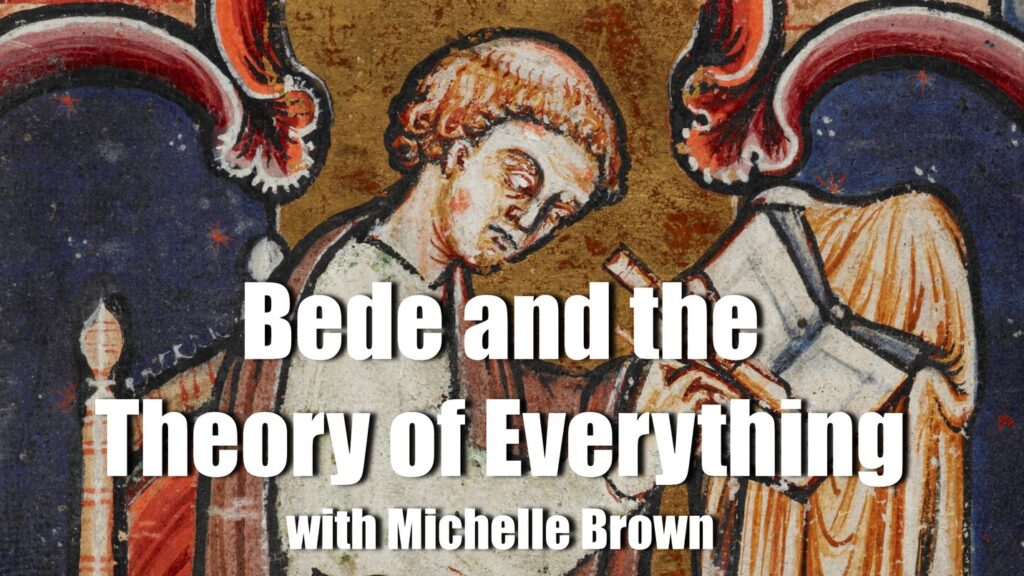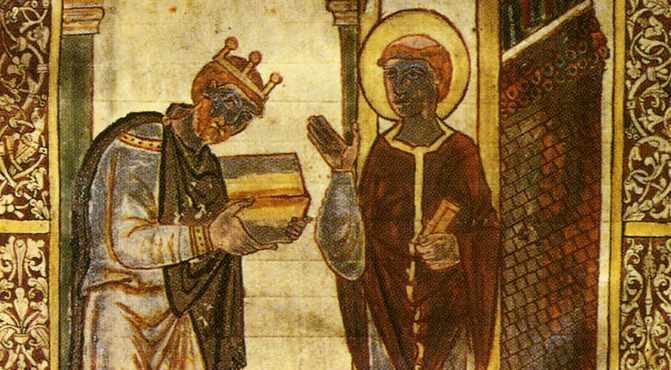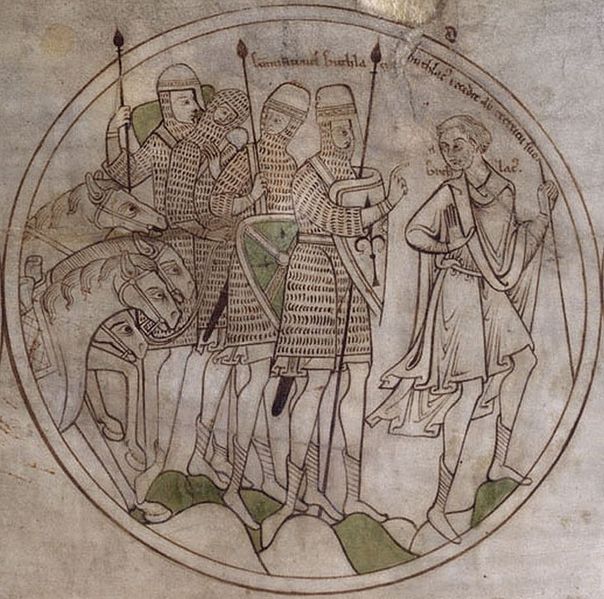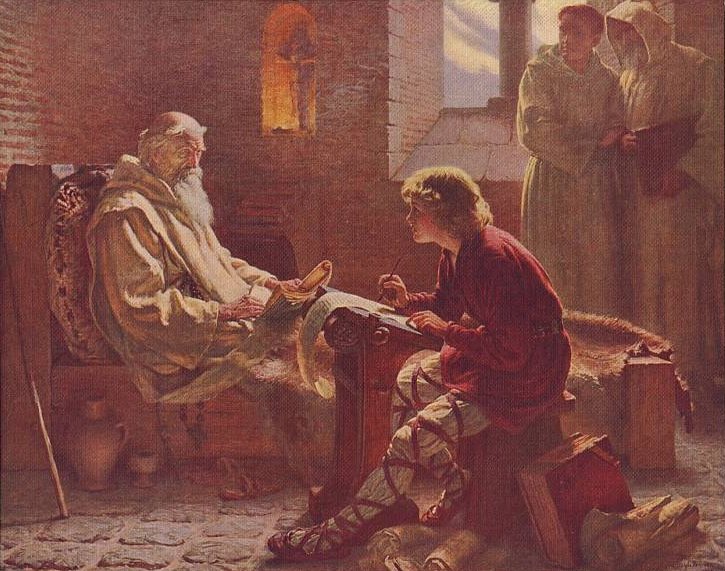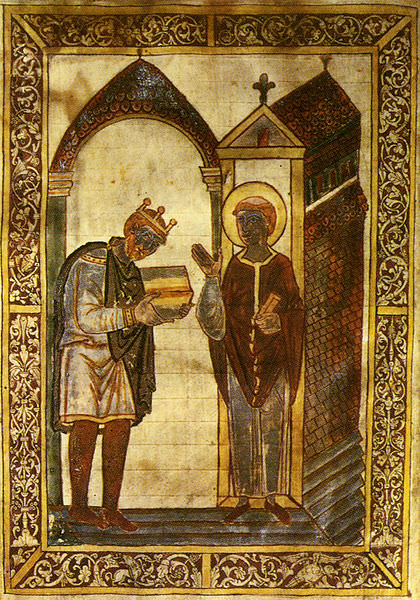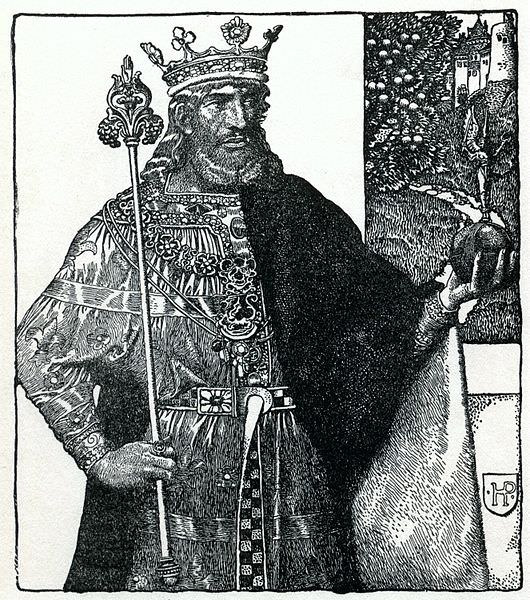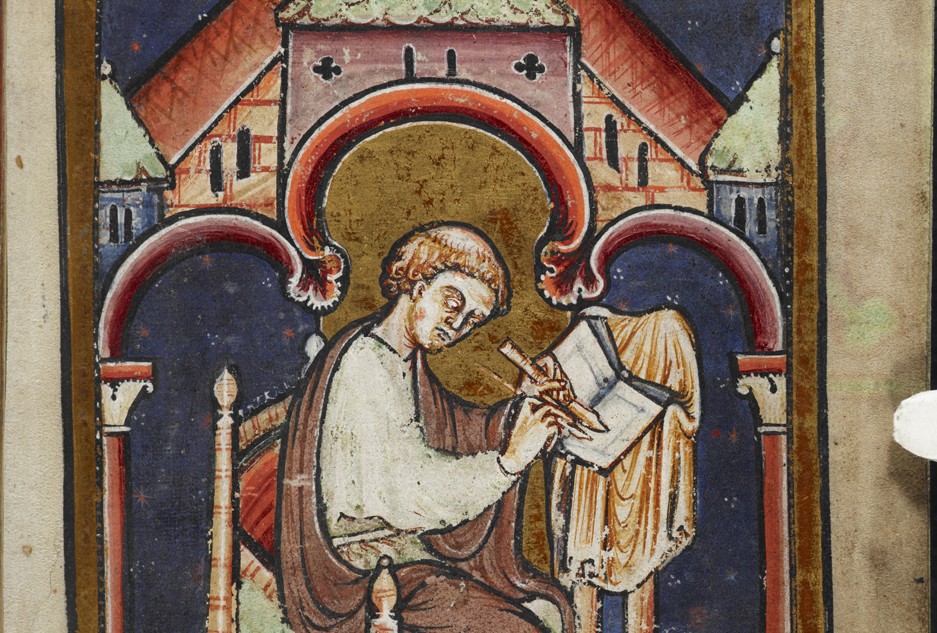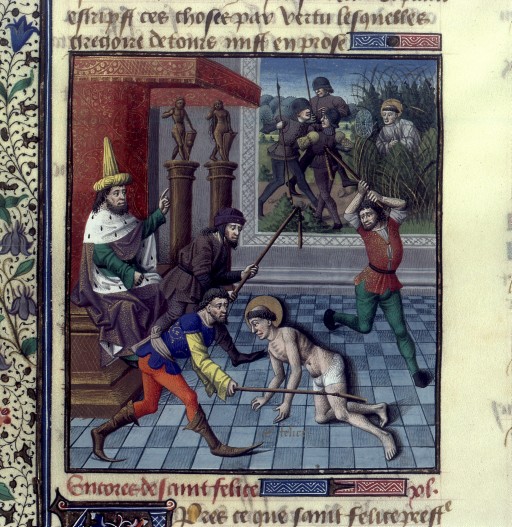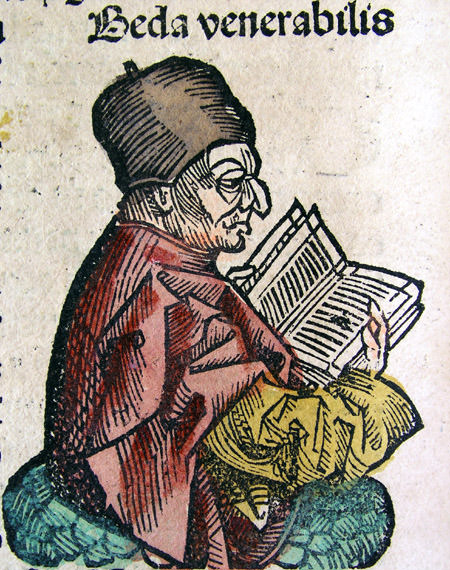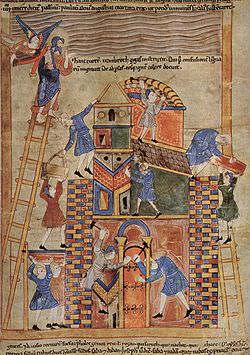The Council of Whitby: A Study in Early Anglo-Saxon Politics
This article re-examines the Council of Whitby (664) in light of political tensions in early Anglo-Saxon England, arguing that the synod was driven as much by dynastic conflict and papal diplomacy as by liturgical dispute. Drawing on sources like Bede and the Life of Wilfrid, it offers a revised timeline and highlights the council’s significance in Oswiu’s struggle for ecclesiastical and political supremacy.
Bede, the Scribe of Scripture: His impact upon Northumbrian publishing
The study of Bede’s manuscripts reveals his impact on biblical scholarship, linking the ancient and medieval worlds.
Bede and the Theory of Everything with Michelle Brown
This week on The Medieval Podcast, Danièle speaks with Michelle Brown about Bede’s life, his contribution to a medieval understanding of everything, and how he shaped the way we think about the early Middle Ages.
New Medieval Books: Bede and the Theory of Everything
A biography of the eighth-century monk Bede, focusing on his vast interest in learning and writing about the world he lives in.
Pater Ecgberct of Rath Melsigi: The Hero of Bede’s Historia Ecclesiastica?
Are there heroes that can be celebrated in this period? Is it possible that somebody like Ecgberct could be a hero of somebody like Bede and in something like Historia Ecclesiastica?
Astronomical and Atmospheric Observations in the Anglo-Saxon Chronicle and in Bede
Chronicles and narrative histories of the Early Middle Ages contain a number of entries relating to astronomical events and atmospheric phenomena.
Augustine among the Angels: The Venerable Bede’s impressive resume
I will give you a taste of Bede’s many accomplishments, not the least of which is his instrumental role in the diffusion of Augustine’s works.
Cast of Bede’s skull rediscovered
‘The Skull of Bede’ exhibition opened yesterday at Bede’s World, Jarrow
How an Early Medieval Historian Worked: Methodology and Sources in Bede’s Narrative of the Gregorian Mission to Kent
This dissertation examines the methods and sources employed by Bede in the construction of his account of the Gregorian mission, thereby providing an insight into how an early medieval historian worked.
The Old English Translation of Bede’s Historia Ecclesiastica Gentis Anglorum in its Historical and Cultural Context
Bede’s Historia Ecclesiastica Gentis Anglorum (HE), written c. 731, enjoyed a great popularity among the Anglo-Saxons and Carolingians and was one of the most popular texts in medieval Europe.
Soldier saints and holy warriors: Warfare and sanctity in Anglo-Saxon England
This study examines hagiographers’ changing literary tropes as subtle but important reflections of medieval Christianity’s evolution from rejecting the sword to tolerating and even wielding it. H
Bede’s Temple as History
Another IHR paper, this time, a talk given about Bede’s writing and his interest in the image of the Temple and its relation to Christianity. This paper also examined how Bede’s views shifted over time. How did Bede view Judaism? Was he truly ambivalent?
The Uses Made of History by the Kings of Medieval England
The kings of medieval England, besides using history for the entertainment of themselves and their courts, turned it to practical purposes. They plundered history-books for precedents and other evidences to justify their claims and acts. They also recognised its value as propaganda, to bolster up their positions at home and strengthen their hands abroad.
The derivation of the date of the Badon entry in the Annales Cambriae from Bede and Gildas
The battle of Badon [Bellum Badonis], in which Arthur carried the Cross of our Lord Jesus Christ for three days and three nights on his shoulders and the Britons were victorious.
Burning Idols, Burning Bridges: Bede, Conversion and Beowulf
This article will re-examine some of the information in Bede’s Historia Ecclesiastica Gentis Anglorum, completed in AD 731, on the conversion of the Anglo-Saxons to Christianity in the late sixth and seventh centuries.
The Role of Bishops in Anglo-Saxon Succession Struggles, 955 x 978
With these words the anonymous author of the Vita Sancti Oswaldi, now believed to be Byrhtferth of Ramsey, depicts the situation after the death of King Edgar in 975.
Depictions of the Scots in the Arthurian Legend
Depictions of the Scots in the Arthurian Legend Diana Jefferies Journal of the Sydney Society for Scottish History: Vol 14 (2013) Abstract This…
An Ideal Marriage: Abraham and Sarah in Old English Literature
Offers a look at how Bible characters Abraham and Sarah are treated in the old English literature. How their marital relationship is portrayed; Neglect in the character of Sarah; Development in the character of Abraham; How the old English literary writers treated Abraham.
St. Ninian of Whithorn
My interest here is in finding usable information regarding the centuries before Bede and in the way in which new data, especially the outstanding recent archaeological discoveries at Whithom in Wigtownshire (which is certainly the site of Candida Casal. might support and add to his picture of St. Ninian and the importance of his church at Candida Casa.
The Weight of Necklaces: Some insights into the wearing of women’s jewellery from Middle Saxon written sources
Extracts from Bede’s Ecclesiastical History, and other contemporary Anglo-Saxon and Frankish sources concerning queens and princesses who went into the church, show that these authors were aware that in the seventh century necklaces could be an important part of the identity of high status women.
The Venerable Bede
Venerable: commanding respect because of great age or impressive dignity; worthy of veneration or reverence because of noble character; a title for someone proclaimed by the Roman Catholic church to have attained the first degree of sanctity. The Anglo-Saxon monk Bede easily met this definition.
Bede on the Life of St. Felix
If the eighth-century Anglo-Saxon writer Bede had the chance to rework a Saint’s life, what changes would he make and how would he make it more relevant for his audience?
From Rome to the antipodes: the medieval form of the world
Here we discuss how some medieval scholars in the Western Europe viewed the form of the world and the problem of the Antipodes
Bede’s Perspective and Purpose in the Ecclesiastical History of the English People
I argue that Bede’s involvement in ecclesiastical affairs throughout his life both illuminates and clouds his perspective on the history of the English church.
Narratives of the saintly body in Anglo-Saxon England
This dissertation investigates narratives of the saintly body in Anglo-Saxon England. Specifically, it examines the ways in which the bodies of holy men and women were constructed through such narratives and read in local appropriations of emblematic vitae and passiones.


